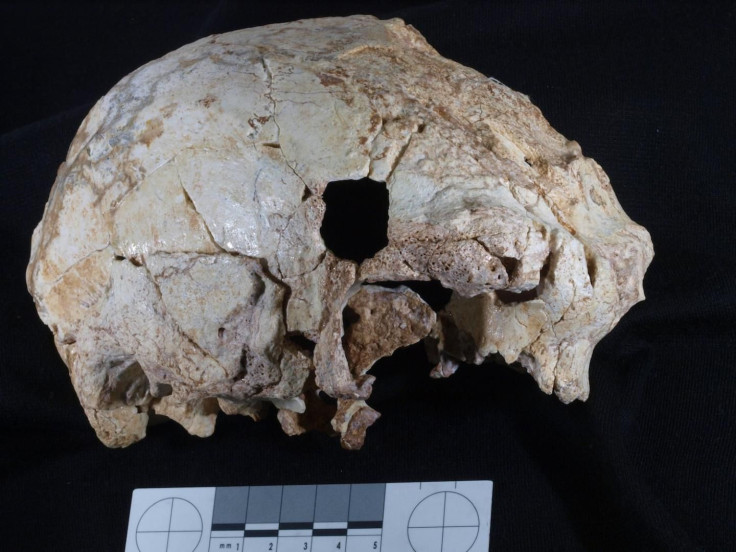How Humans, Neanderthals Evolved: This Fossil Of An Ancient Head Could Provide Answers

Archaeologists have dug up someone’s head — a fossil that holds clues about human history and evolution.
The cranium is the oldest ever found in Portugal, dating back to about 400,000 years ago, a study in the Proceedings of the National Academy of Sciences explains. It is also the westernmost noggin from that time period to be uncovered. But the skull itself is not the only treasure: The study says the cranium, found in the Aroeira cave site, is connected to nearby stone tools like hand axes and animals remains, including “burnt bones [that suggest] a controlled use of fire.”
According to the authors, the skull and its associated materials speak to “the origin of the Neanderthals and the pattern of human evolution” in Europe during that prehistoric period.
Neanderthals are thought to have emerged a few hundred thousand years ago and were eventually replaced by modern humans.
Binghamton University, which had an anthropologist on the international team that made the discovery, said in a statement that the newly uncovered cranium is strongly tagged to 400,000 years ago, which sets it apart from other similar fossils that “are poorly dated or lack a clear archaeological context.”
Those poorly dated fossils have been one reason experts still debate when exactly Neanderthals emerged and where that happened. But the Aroeira 3 cranium is different, and the PNAS study describes it as having features that are characteristic of its era yet in a “combination” that is unique among the other fossils of its era, perhaps because separate populations looked different from one another.
Observing features — both similar and distinct — will help piece together the Neanderthal timeline, by seeing how far off skulls from different time periods are from a typical Neanderthal head.
Although the Aroeira find is only just being announced, it was actually dug up in 2014 — but it was “firmly cemented” in sediment and “was removed from the site in a large, solid block,” Binghamton University said. It took two years to clear and restore.
See also:
DNA Proves the Same Aboriginals Have Been Living in Australia for 50,000 Years
Fossil News: These Two Extinct Reptiles Are Actually the Same Animal
© Copyright IBTimes 2024. All rights reserved.











